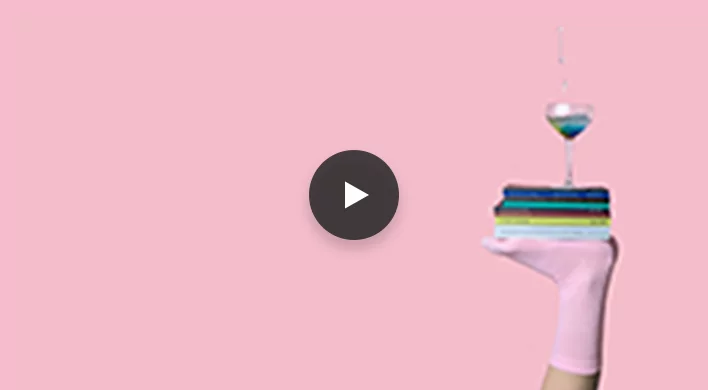Understand Marketing in 2023: Basics, Strategies & Types
Includes FREE Templates and Examples – 2023
Updated by Xtensio
Table of Contents
Welcome to the exciting world of marketing in 2023, where businesses continue to push the boundaries of creativity and innovation to connect with their target audiences. With an ever-evolving landscape of tools, techniques, and strategies at their disposal, marketers are faced with the thrilling challenge of finding the perfect balance between tradition and technology. Join us as we explore the basics, strategies, and types of marketing that are shaping the future of business success.
Short Summary
- Understanding Marketing is essential for business success, providing a platform to communicate with customers and generate revenue.
- Successful marketers use traditional & digital marketing strategies combined with the 4 Ps framework of product, price, place & promotion.
- B2B marketing requires targeting decision-makers and building long-term relationships through consistent communication & value provision.
Understanding Marketing: A Comprehensive Overview

Marketing is the lifeblood of business success, combining a multitude of campaigns, digital marketing strategies, and market research techniques to create interest, attract customers, and build brand loyalty. From business-to-business marketing to social media marketing, content marketing, and search engine marketing, the American Marketing Association defines marketing as “the process of promoting a company’s service to generate interest from potential customers and foster loyalty to the business.” In this context, marketing refers to the various methods and strategies used to achieve these goals.
With a global marketing industry projected to reach $4.7 trillion in expenditure by 2025, understanding the role of marketing in business success and the key components that make it effective is crucial for thriving in today’s competitive landscape.
The Role of Marketing in Business Success
Marketing plays a vital role in the success of any business, providing a platform to inform, advertise, and inspire prospective customers while shaping the brand image they wish to portray. Companies leverage a variety of platforms, social media channels, and internal teams to target their audience, share messages, increase visibility, and foster brand loyalty. Market research conducted by the marketing team provides valuable insights that inform product and engineering teams on what to create, sales teams on what to sell, and advertising teams on what to communicate.
By reaching the desired target audience and establishing a strong brand presence, marketing not only generates revenue, but also contributes to the long-term growth and stability of a business. Effective marketing strategies enable businesses to align their products and services with customers who desire access to those offerings, ultimately guaranteeing profitability and creating a competitive advantage.
Key Components of Effective Marketing
To truly master the art of marketing, a comprehensive understanding of three essential elements is required: customer comprehension, constructing effective messages, and employing creative approaches to disseminate messages. This involves segmentation, targeting, and positioning, as well as defining the target audience and researching marketing strategies to craft compelling and impactful campaigns.
Employing creative approaches to disseminate messages is where the true magic of marketing lies. With a plethora of platforms and techniques at their disposal, marketers can experiment with promotional strategies, tracking, and assessment methods to ensure their campaigns reach the right audience at the right time. By understanding the customer, crafting powerful messages, and utilizing creative methods to deliver them, businesses can effectively navigate the ever-changing world of marketing and achieve lasting success.
Marketing Strategies: Traditional and Digital

The realm of marketing strategies can be divided into two main categories: traditional marketing methods and digital marketing techniques. Traditional methods encompass print advertising, direct mail, and television commercials, while digital techniques include social media marketing, email marketing, and search engine optimization (SEO).
Each approach offers its own unique advantages and challenges, with traditional methods often providing broader reach and creative freedom, and digital techniques allowing for more precise targeting and measurable results. In today’s world, successful marketers seamlessly integrate both traditional and digital strategies to create a comprehensive marketing plan that caters to their target audience’s needs and preferences.
Traditional Marketing Methods
Traditional marketing methods have been used for decades to reach audiences and create brand awareness. These methods include:
- Phone calls
- Face-to-face meetings
- Direct mail
- Print ads
- Poster ads
- Presentations
- Events
- Signage
- Billboards
Traditional marketing, including print marketing, continues to be effective in reaching a large audience and can offer more creative freedom and the ability to target specific demographics.
However, there are drawbacks to traditional marketing methods. Some of these drawbacks include:
- They can be more expensive than digital marketing methods
- Their effectiveness can be challenging to assess
- They require more time and resources to produce and disseminate
Despite these challenges, traditional marketing methods still hold a valuable place in the marketer’s toolbox, especially when combined with digital marketing techniques.
Digital Marketing Techniques
Digital marketing techniques have revolutionized the way businesses connect with their target audiences. These techniques, which are part of Internet marketing, include social media marketing, email marketing, search engine optimization (SEO), and influencer marketing. Digital marketing strategies offer a plethora of benefits, such as the ability to reach a global audience, track and measure campaign success, and adapt marketing messages in real time.
One of the most significant advantages of digital marketing techniques is their ability to target specific audience segments with tailored marketing messages. This precision targeting allows businesses to deliver the right message to the right person at the right time, resulting in increased engagement and higher conversion rates.
By employing a combination of traditional and digital marketing methods, businesses can create a well-rounded, effective marketing strategy that caters to the needs and preferences of their target audience.
Marketing Mix: The 4 Ps Framework

The 4 of them were the 4th. Ps framework (Product, Price, Place, and Promotion) is a popular marketing mix model that helps businesses develop effective marketing strategies. This framework provides a comprehensive overview of how marketing interacts with each stage of the business, aiding businesses in creating an effective marketing mix that will target the appropriate customers and optimize profits.
By exploring each of the 4 subjects outlined below. Ps, businesses can gain valuable insights into their marketing efforts and make informed decisions to improve their overall marketing strategy.
Product Strategy
Product strategy is a crucial component of an effective marketing plan. It involves understanding a product’s unique selling proposition (USP) and how it fulfills a market or customer need. By understanding the product’s value and its distinguishing features compared to competitors, marketers can effectively promote the product and appeal to their target audience. Additionally, it is essential to consider whether the product can be paired with another product or product line and the presence of substitute products in the market.
Understanding the product’s value is essential in marketing as it assists marketers in pinpointing why customers would desire it and how to promote it effectively. By focusing on the product’s USP and addressing the needs and preferences of the target audience, businesses can create a product strategy that resonates with potential customers and drives sales.
Pricing Strategy
In the world of marketing, pricing plays a crucial role in the overall success of a product or service. Marketers must:
- Investigate competitors’ prices
- Decide how they can demonstrate that their product is worth a higher price than similar products in the market
- Demonstrate that even if it’s priced lower, it is still of good quality
A well-thought-out pricing strategy can greatly impact the perceived value of a product and influence customer purchasing decisions.
Understanding the factors that affect a product’s price is essential for creating a successful marketing strategy. By researching competitor prices and analyzing customer preferences and willingness to pay, marketers can develop a pricing strategy that maximizes profits without sacrificing customer satisfaction. A well-balanced pricing strategy can make all the difference in the competitive world of marketing.
Distribution Strategy (Place)
Distribution strategy, or place, focuses on determining the best methods and locations to distribute products, taking into account factors such as retailer fees and online sales channels. The distribution strategy encompasses various aspects, such as shelf height, product location, and the products adjacent to it in physical stores. Additionally, businesses must consider “slotting fees” – fees charged by retailers to position products at eye level or at a child’s eye level in their stores.
An effective distribution strategy ensures that products are easily accessible and visible to potential customers, ultimately increasing the likelihood of sales. By carefully considering the factors that affect product placement and distribution, businesses can optimize their marketing efforts and create a seamless purchasing experience for their customers.
Promotion Strategy
Promotion strategy is an essential component of the marketing mix, integrating the other components (product, price, and place) into a comprehensive plan to create awareness and drive sales. Promotion involves a wide range of activities, including:
- Advertising
- Selling
- Sales promotions
- Public relations
- Direct marketing
- Sponsorship
- Guerrilla marketing
The ultimate goal of the promotion strategy is to generate enthusiasm for the product and increase brand recognition.
By utilizing diverse promotional activities and platforms, marketers can effectively target their audience and create powerful marketing campaigns that resonate with potential customers. Creative and engaging promotional strategies can make a significant impact on the overall success of a marketing campaign, capturing the attention of the target audience and motivating them to take action.
Types of Marketing: From Inbound to Influencer

Marketing can be broadly categorized into two primary types: inbound marketing and influencer marketing. Inbound marketing involves drawing audiences in through content and engagement, while influencer marketing leverages influential individuals to promote a brand message to a larger audience.
Both types of marketing offer unique advantages and challenges, depending on the target audience and specific marketing objectives. By understanding the differences and potential synergies between these marketing types, businesses can develop a well-rounded marketing strategy that effectively engages and converts their target audience.
Inbound Marketing
Inbound marketing is a powerful approach that focuses on building relationships with customers, utilizing tactics such as:
- content
- social media
- web design
Attract and engage audiences. This non-intrusive method of marketing fosters a connection with potential customers by providing valuable and engaging content that encourages them to actively seek out more information about the brand or product.
The advantages of inbound marketing include the development of strong customer relationships, enhanced brand recognition, and the generation of leads and sales. By employing inbound marketing strategies, such as content marketing, email marketing, social media marketing, and search engine optimization (SEO), businesses can create a loyal customer base that will continue to support their brand in the long term.
Search Engine Optimization (SEO)
Search engine optimization (SEO) is a critical component of digital marketing that involves improving a website’s visibility in search engine results through the use of relevant content, keywords, and links. SEO encompasses several key elements, such as:
- Keyword research
- Content optimization
- Link building
- Technical optimization
By implementing SEO best practices, businesses can increase their online presence and attract more organic traffic to their website.
The benefits of SEO include:
- Enhanced search engine understanding of a website’s content and usefulness to users
- Increased visibility in search engine results
- Driving more website traffic and conversions
By incorporating SEO strategies into their overall marketing plan, businesses can improve their online visibility and reach a wider audience of potential customers.
Influencer Marketing
Influencer marketing is a rapidly growing marketing strategy that involves partnering with influential individuals who have a strong social media presence to promote a brand or product. By leveraging the reputation and reach of these influencers, businesses can connect with new audiences, build trust and credibility, and ultimately drive sales and growth. Influencer marketing can be particularly effective for businesses targeting younger demographics, who often place a high value on the opinions and recommendations of their favorite online personalities.
To get the most out of influencer marketing, businesses should:
- Research potential influencers to ensure they align with their brand values and target audience
- Set clear goals for influencer partnerships
- Develop a strategy for working with influencers
- Tap into the power of influencer marketing to boost brand visibility and generate valuable customer engagement.
Measuring Marketing Success: Metrics and Analytics

Measuring marketing success is a crucial aspect of any marketing campaign. By tracking key performance indicators (KPIs) and utilizing analytics tools, businesses can evaluate the effectiveness of their marketing efforts and make informed decisions on how to optimize and improve their strategies.
Some common KPIs used in marketing include website traffic, conversion rates, and social media engagement. By monitoring these metrics and analyzing the results, businesses can gain valuable insights into the performance of their marketing campaigns and make data-driven decisions to drive growth and success.
Key Performance Indicators (KPIs)
Key performance indicators (KPIs) are quantifiable metrics used by marketers to assess the success of their marketing efforts. Examples include website traffic, conversion rates, and social media engagement. By tracking these KPIs, marketers can gain valuable insights into the performance of their marketing campaigns and identify areas for improvement.
Measuring KPIs is essential for understanding the effectiveness of marketing activities and guiding decision-making. By using analytics tools and techniques, such as Google Analytics, A/B testing, and surveys, businesses can gather data on their KPIs and make informed decisions on how to optimize their marketing strategies for maximum impact.
Analytics Tools and Techniques

Analytics tools and techniques enable marketers to collect, analyze, and interpret data from their marketing campaigns, providing insights for optimization and improvement. By using tools such as:
Marketers can track the performance of their campaigns and identify trends, patterns, and areas for improvement.
The significance of analytics tools and techniques in marketing cannot be overstated. By providing valuable insights into the performance of marketing campaigns, these tools empower businesses to:
- Make data-driven decisions
- Optimize their marketing strategies for maximum impact
- Ensure they are making the most of their resources
- Drive growth and success
By incorporating analytics tools and techniques into their marketing efforts, businesses can ensure they are making the most of their resources and driving growth and success.
Business-to-Business (B2B) Marketing: Strategies and Best Practices

Business-to-business (B2B) marketing is a unique subset of marketing that focuses on targeting decision-makers within businesses and building long-term relationships to drive sales and growth. In order to optimize success in B2B marketing, it is essential to:
- Understand the target audience
- Develop a comprehensive marketing plan
- Employ digital marketing techniques
- Implement analytics tools and techniques.
In this section, we will explore strategies for targeting decision-makers and building long-term relationships in B2B marketing.
Targeting Decision-Makers
Targeting decision-makers in B2B marketing involves understanding their needs, preferences, and pain points to create tailored marketing messages and campaigns. By focusing on the specific challenges and opportunities faced by decision-makers, businesses can develop marketing strategies that resonate with their target audience and drive engagement.
Some strategies for targeting decision-makers include:
- Direct outreach: initiating communication and building relationships with decision-makers through personalized outreach
- Creating an Ideal Customer Profile: creating a detailed profile of your ideal customer and targeting decision-makers within those organizations
- Account-based marketing: focusing on specific target accounts and tailoring your marketing efforts to meet the needs of decision-makers within those accounts
Researching the target decision-makers helps to understand their pain points, challenges, and preferences, enabling businesses to create marketing campaigns that appeal to their specific needs and priorities.
Building Long-Term Relationships
Building long-term relationships in B2B marketing requires consistent communication, providing value, and demonstrating expertise to establish trust and credibility with clients. By delivering value and exhibiting expertise through offerings such as helpful advice, discounts, and high-quality products and services, businesses can foster trust and credibility with their clients. Furthermore, consistently communicating with clients and being open and truthful in all dealings helps to build strong, long-lasting relationships.
Establishing long-term relationships in B2B marketing is critical as it enables businesses to:
- Develop a strong bond with their customers, resulting in heightened loyalty and repeat transactions
- Cultivate trust and reliability, which can generate more referrals and positive publicity
- Ensure their B2B marketing efforts lead to lasting success
By focusing on building long-term relationships and demonstrating value, businesses can achieve these benefits.
Summary
In conclusion, understanding marketing in 2023 involves a comprehensive exploration of marketing concepts, strategies, and techniques, ranging from traditional methods to digital marketing, the 4 Ps framework, and various types of marketing such as inbound and influencer marketing. By leveraging the power of analytics tools and techniques, businesses can measure the success of their marketing efforts and make data-driven decisions to optimize their strategies. In the ever-evolving world of marketing, it is essential for businesses to continuously adapt, innovate, and strive for excellence to achieve lasting success and growth. So, go forth and conquer the marketing landscape of 2023!
Frequently Asked Questions
What are 4 examples of marketing?
Four examples of marketing are the four Ps – product, price, place, and promotion – which form a “marketing mix” used to create a framework for organizing and planning a marketing strategy.
This marketing mix is used to create a strategy that will help a business reach its goals. It is important to consider all four Ps when creating a marketing strategy, as each one plays a role in the success of the overall plan.
Product is the item or service.
What are the 4 P’s of marketing?
The 4 were the 4th. The Ps of marketing are a collection of four essential elements—namely product, price, place and promotion—that form the core of a marketing strategy. These elements are collectively known as “the marketing mix” and are used to organize and plan a marketing campaign for a product or service.
What is the main focus of marketing?
The main focus of marketing is to influence profitable customer action and attract consumers to a brand through market analysis, research, and educational and helpful messaging targeted towards the ideal customers.
This requires an understanding of the customer’s needs, wants, and desires, as well as an understanding of the competitive landscape and the brand’s unique value proposition. It also requires an understanding of the various channels and platforms available to reach the target audience.
What are the 7 keys of marketing?
The 7th is the 7th. The Ps of marketing, also known as the marketing mix, comprises product, price, promotion, place, people, process, and physical evidence, allowing companies to evaluate and reevaluate their business activities.
These seven elements make up the marketing mix.
What is IT in marketing?
IT Marketing involves understanding the marketplace and competitors, defining market positioning, pricing, and services, promoting your firm to the target audience, and communicating how they can benefit from working with you.













